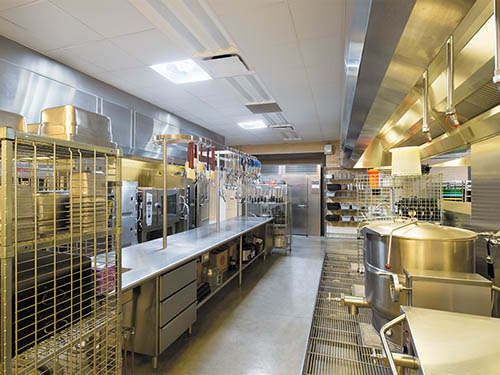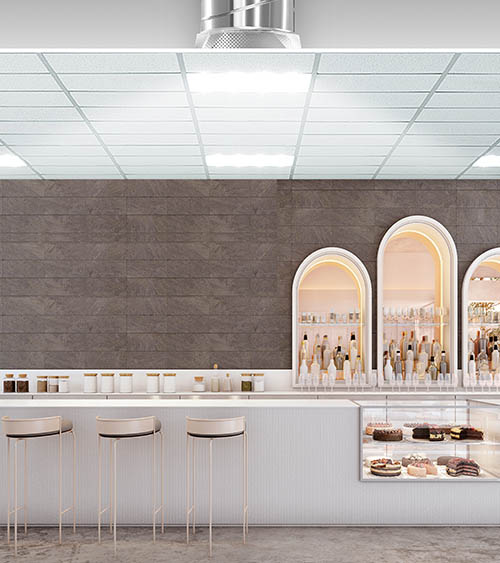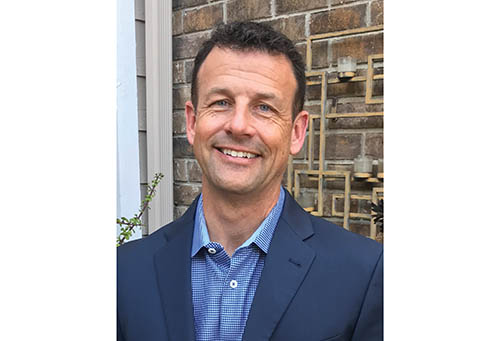— By Ty Johnson —
Tubular daylighting solutions for modular restaurants.
The concept of modularity is not new in the building construction industry. However, in the wake of post-pandemic economies and increasing concerns about climate change, there is a shift in how we approach the built environment. Modular structures offer numerous advantages that are reshaping the landscape of restaurant construction. When combined with advanced daylighting strategies, they can achieve unparalleled benefits in terms of efficiency and sustainability.
What is Modular Construction?
Modular construction involves the prefabrication of building components or entire modules off-site in controlled factory environments. These modules are created using the same materials and building codes required in traditional construction, and are then transported and assembled on-site, enabling faster construction timelines, higher levels of quality control and enhanced flexibility in design and functionality.
Benefits of Modular Buildings in the Restaurant Industry:
1. Time Efficient:
Speed is arguably one of the greatest benefits for restaurants taking modular construction into consideration. Projects can be delivered up to 50% faster compared with traditional construction methods because groundwork and foundations are completed on-site while modules are manufactured simultaneously off-site.
2. Cost-Effective:
The speed of modular construction also makes it more cost-effective. By accelerating the building process, restaurants can open faster and generate revenue much sooner. Additionally, in some cases, modular buildings offer a tax advantage.
3. More Flexibility:
Modular construction offers greater flexibility in terms of design modifications and future expansions. The modules can be easily reconfigured or relocated to meet changing needs, which provides additional perks to quick-service restaurant chains.
4. Sustainable/Less Waste:
Modular construction utilizes efficient construction processes, fewer materials and often incorporates eco-friendly materials. In fact, this type of construction leads the market in the use of recycled materials. Additionally, modular construction generates significantly less waste compared to conventional methods due to the controlled manufacturing environment. This allows for precise material utilization, thereby reducing environmental impact.
If modular construction plays an important role in the future of the restaurant industry, how can we add additional benefits such as improving individual well-being while making it even more sustainable?
Harnessing the Power of Daylighting for Modular Construction
While modular construction offers undeniable benefits, there is a pivotal opportunity to enhance these structures further through the integration of a strategic daylighting design.

In today’s architectural landscape, natural daylight is widely acknowledged as an ideal primary source of daytime interior illumination, offering perfect color rendition and meaningful variation in spectral content and intensity that nurture building occupants while promoting energy efficiency and sustainability.
Moreover, when precise and controlled illumination of interior spaces is required, the tubular daylighting device (TDD) stands out for its unparalleled ease of design and application flexibility. Utilizing advanced optical materials and technologies, these toplighting systems effectively collect, transport and deliver balanced and controlled daylight to interior spaces, without producing glare.
The Benefits of Tubular Daylighting Devices in Modular Buildings:
1. Improved Well-being and Productivity:
Every day, new research, case studies, design guides and standards emphasize the crucial role of daylight as the primary source of interior lighting for our well-being. This is because exposure to natural light through the day can improve our body’s circadian rhythms. When an individual is exposed to the natural fluctuations of daylight, a remarkable interplay unfolds between the external environment and the intricate neural pathways of the brain. This interaction triggers the release of essential neurotransmitters that play a pivotal role in directing the body to awaken and become alert during daylight hours. It also boosts the production of the happy hormone, serotonin, reducing stress, anxiety and depression. These benefits lead to increased productivity, wellness and happiness among employees, and can improve employee retention and reduce absenteeism. It also creates a more welcoming environment that enhances the restaurant experience for guests.
2. Thermal Performance and Energy Savings:
It should come as no surprise that incorporating a strategic daylighting design into any building type helps reduce energy consumption and cost. TDDs also excel in thermal efficiency, reducing heat loss in winter and heat gain in summer. This is because unlike traditional skylights, TDDs can capture and deliver abundant natural light through small roof openings. This ensures an energy-efficient, comfortable indoor environment with reduced risks of air infiltration and water damage.
3. Enhanced Ambiance and Customer Experience:

We, of course, can’t discuss restaurant design without noting the customer experience. In today’s competitive market, providing an exceptional dining environment goes beyond just offering delicious food. Natural daylight, especially through TDDs, plays a vital role in enhancing the ambiance and creating a welcoming atmosphere without producing glare. Furthermore, TDDs offer exceptional color rendition by providing a natural and balanced spectrum of light. This can have a positive impact on food preparation and quality control in commercial kitchens, as it enables chefs and staff to accurately assess the freshness, quality and presentation of food items.
4. Easy Installation and Maintenance:
Like modular design, TDDs feature factory-assembled parts for faster, easier and more professional-looking installations. The passive daylighting technology does not rely on moving parts, making it virtually maintenance-free. Seals prevent bug and dirt infiltration. In addition, the dome and flashing are designed to eliminate debris buildup. Unlike traditional skylights, which need periodic cleaning and inspection, TDDs do not require ongoing maintenance.
In conclusion, the fusion of modular construction techniques with advanced daylighting technologies such as Tubular Daylighting Devices (TDDs) heralds a new era in sustainable, efficient and customer-centric building design. By harnessing the power of natural daylight, modular restaurants not only offer improved well-being and productivity for occupants but also deliver energy savings. Moreover, the enhanced ambiance created by TDDs contributes to a more welcoming environment, enriching the overall customer experience. Embracing these innovations paves the way for a brighter, more sustainable future in restaurant design and construction.
— Ty Johnson is the national distribution and commercial channel manager of Solatube International, Inc., bringing 20-plus years of expertise in providing environmentally conscious products that not only prioritize sustainability but also aim to enhance the psychological and physiological well-being of humans through their use.

